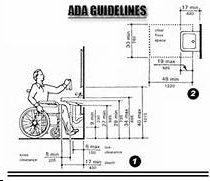NEW YEAR RESOLUTION:
NO HOMES LEFT BEHIND
Home inspectors are busy.
That’s great. But “tunnel vision” can kick in.
New Year’s resolutions are the opportunity to step back, look at the “big picture,” and plan for 2017.
Spotting “big waves” below radar is the way a business gets out in front, and picks up wind to its sails. It’s also insurance against getting left behind, or crushed by future shock.
Two huge mega-trends – with underserved markets looking for help – are crying out for home inspectors. Right here. Right now.
Some trends are easy to see. America’s, and Kentucky’s, economic “recovery” is over. We are chugging along. There are problems. There always are problems, but they’re shrinking.
Employment is up. Wages are starting to go up too. Home sales depend on that.
So it’s now surprise that home sales are trending up too. They may increase by as much as 10% in Kentucky in 2017.
Savvy home inspectors have raised prices every year or two since the upswing began in 2014. (The ones who did not raise prices gave themselves a wage cut, as they ate hikes in costs of insurance, vehicles, and utilities.)
Big trends show up more in data than on the street, or in pay. Big trends are somewhere between “hard to see” and invisible. You have to look for them.
Two “macro” trends, in particular, offer great opportunities to expand home inspection businesses in 2017 – and the years ahead.
The really big one is inspecting disability housing – both homes and commercial. Its kissing cousin is Aging in Place inspections – a doorway to adding remodeling and home improvement inspections to your menu.
The larger wave really is a combination of three major shifts over the last generation – about two decades – coming together. There are nearly 45 million disabled in an average year, plus the “greying of America” yields millions more seniors with growing mobility challenges each year, and finally, to top it all, we have more wounded soldiers returning from America’s longest wars abroad. Add ’em up. That’s a Really Big Wave.
The other is like a rip tide, with its own pull beneath the surface. Before we get to disabilities, lots of people are planning ahead for those problems — and even more should be. Home inspectors may be the only professionals in real estate with no training (or SOP) for homes built, or remodeled, for “Aging in Place.” Yet “aging in place” inspections are an expressway to a whole new clientele — people remodeling and improving their homes — and one of the fastest growing segments of the real estate economy.
DISABILITY HOUSING
The Baby Boom population surge is 75 million people over 65 today. About half will have disabilities by 2030. That’s on top of the 43 million who have disabilities now. In other words, the population of people with disabilities is set to nearly double.
That works out to +/- 1 million homes in Kentucky. You want to ignore that business? And those people?
We’ve always had handicapped and disabled Americans, of course. Some from birth, some from injuries. They have successfully pushed for fair treatment and removing obstacles, gaining new legal protections starting in 1973.
In 1990, they accomplished passing the Americans with Disabilities Act (ADA), signed into law by Pres. George H.W. Bush. (No, it was not that femme fatale ADA, but you might be calling it “residential evil.”) The ADA is a nationwide civil rights law guaranteeing equal opportunity to access buildings, facilities, transportation, and employment. It also made sure state and public servants could not claim immunity from ADA lawsuits and allowed the disabled to win their legal fees too. Three U.S. Supreme Court cases locked it in – 1999’s Olmstead and the Sutton Trilogy cases and 2002’s Toyota ruling. Title III of the ADA sets the minimum standards for accessibility for alterations and new construction of public facilities.
Everywhere you go, you can see the ADA has won. Wheelchair cuts in street curbs and ramps to doors tell you that story. Homes are next. Lots of these people want to “age in place.”
Home inspectors can get in front of the wave — and ride it to success. Naturally, of course, there will be some no one can save from drowning in the undertow. The first inspectors to own any market segment are likely to own it for years.




